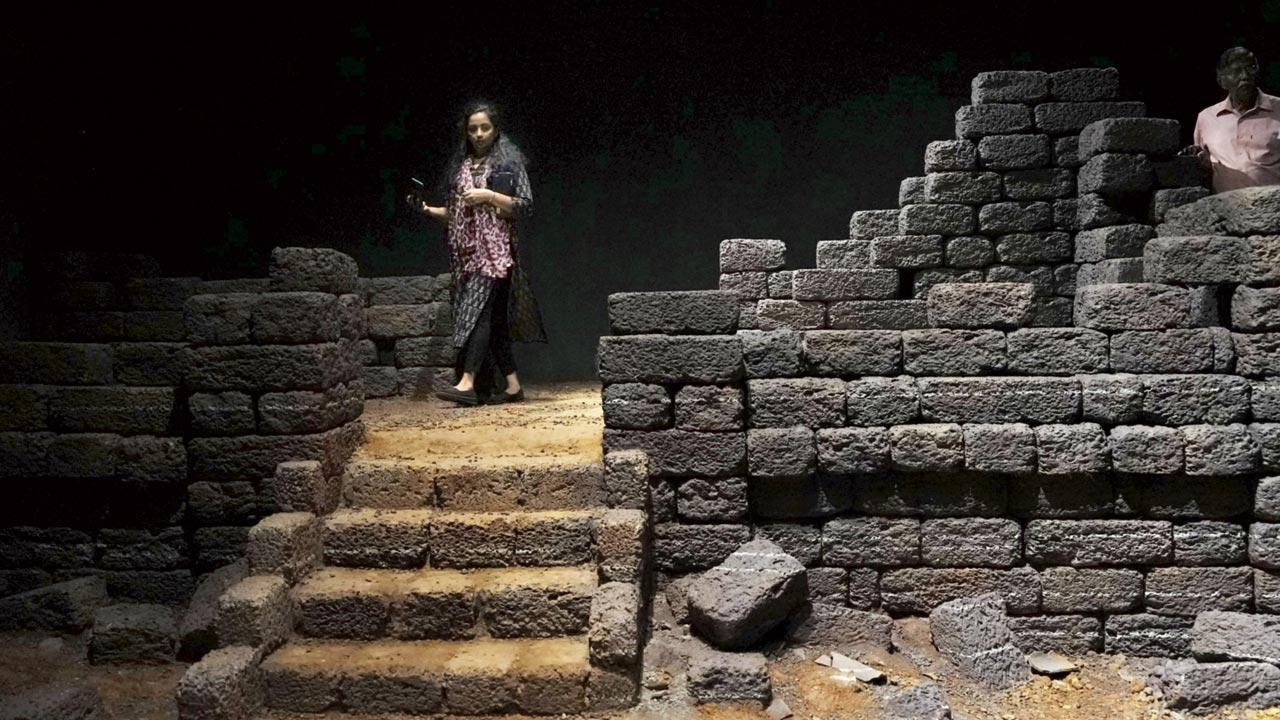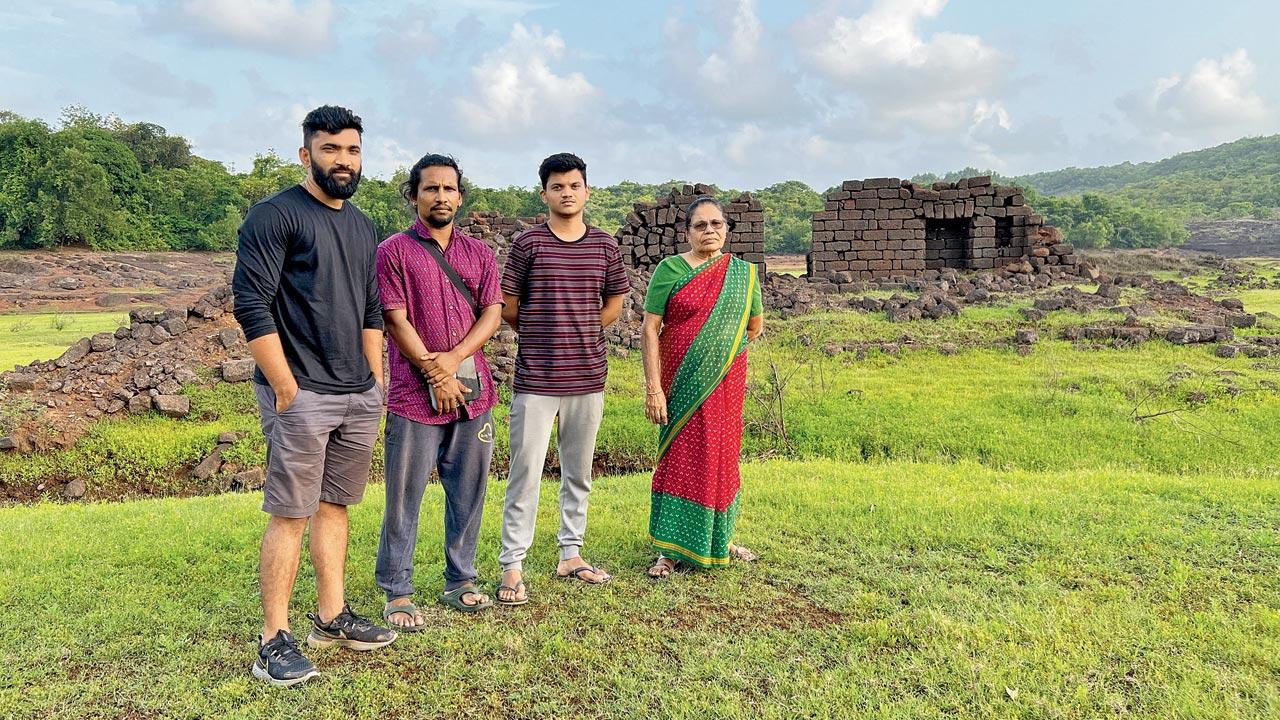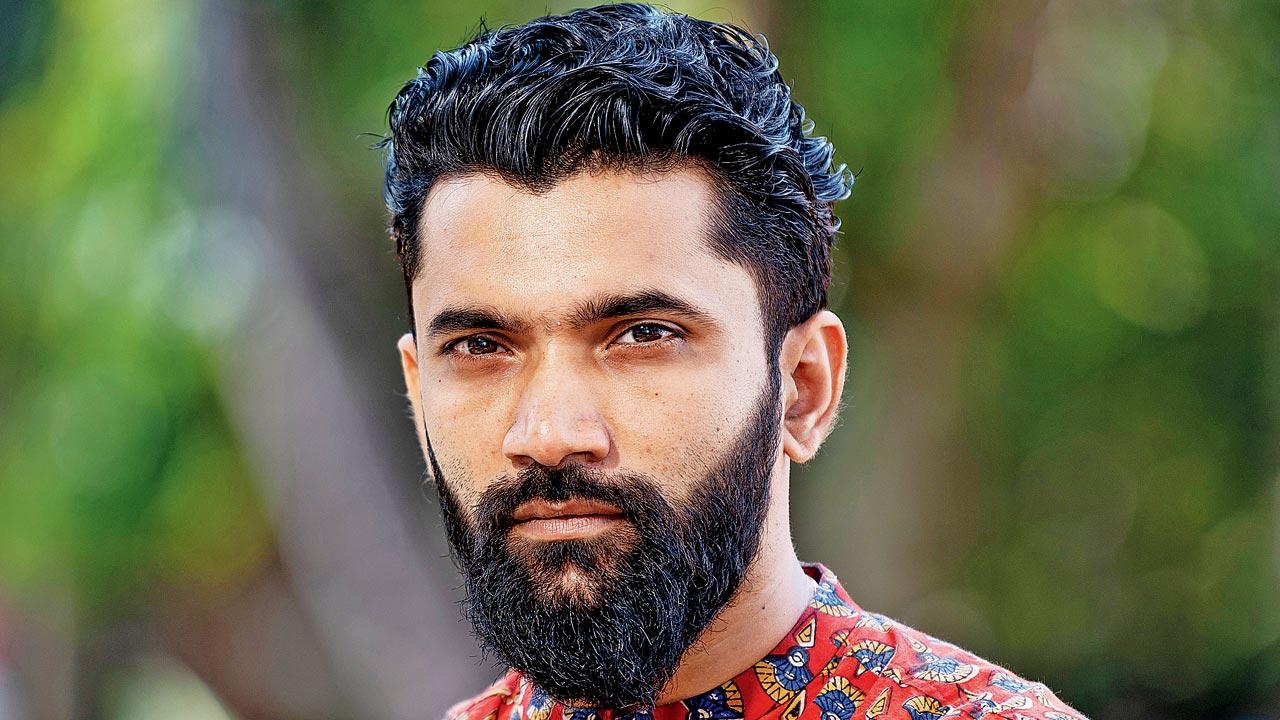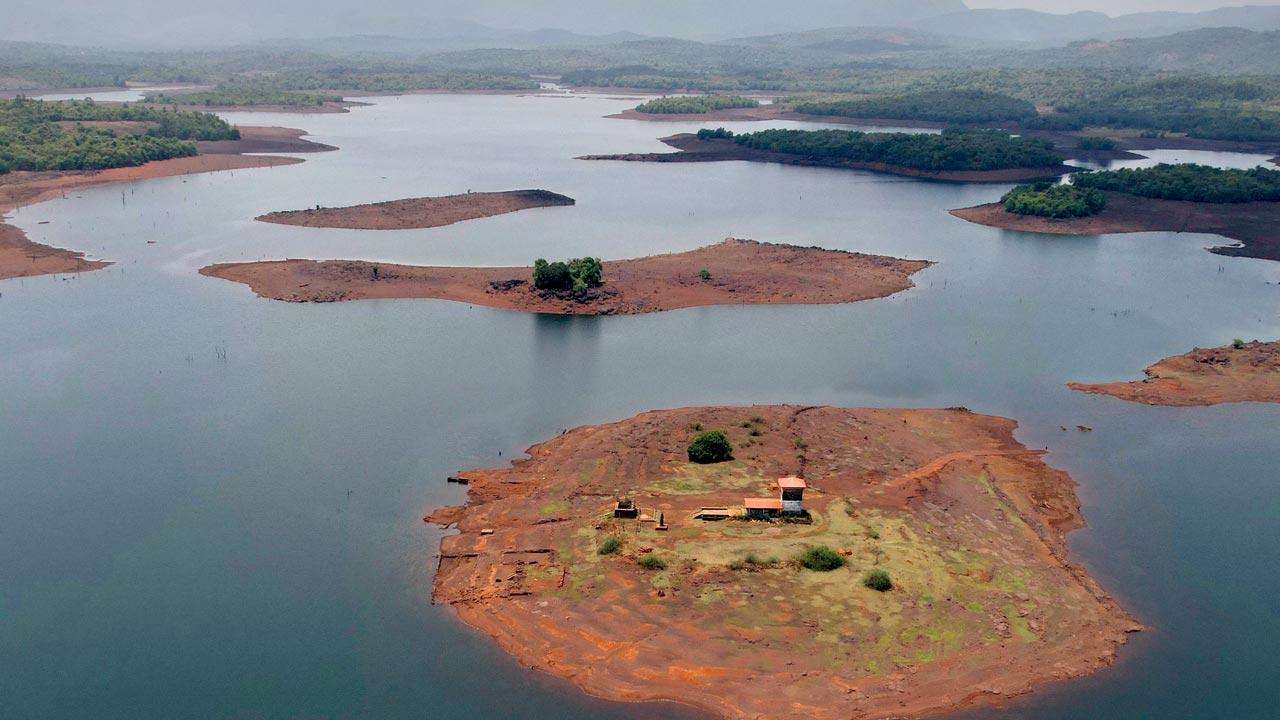Moved by the stories of loss of a village in South Goa, submerged following the construction of the Salaulim dam in the 1970s, an artist attempts to bring to life its ruins that magically resurface each year

To recreate the ruins of Curdi, Sahil Ravindra Naik and his team used laterite stones to make rubber molds; they then cast the molds with different raw materials, like Plaster of Paris, fiber and mud. A total of 1,500 bricks were used to make scalable models of the structures that Naik had mapped during his time in the village
What happens when home drowns, disintegrates and slowly disappears? It takes a part of you, and your memories with it.
ADVERTISEMENT
The villagers of Curdi and Kurpem in the Sanguem taluka of Goa, have been living with the grief of this loss for decades, Goa-based artist Sahil Ravindra Naik tells us over a phone call.
 Villagers from Curdi recording compositions that tell their stories at a studio in Goa
Villagers from Curdi recording compositions that tell their stories at a studio in Goa
The undoing of these two historic villages, he says, began in the 1960s, sometime after Goa was liberated from centuries of Portuguese rule. Buoyed by the possibility of extending the benefits of irrigation and drinking water supply to the newly independent region, Goa’s first chief minister Dayanand Bandodkar commissioned the construction of the Salaulim dam on the Salaulim river, a tributary of Zuari. When construction began in 1975, there were concerns of the reservoir submerging forests sacred to communities, mangroves, vast stretches of fields, and 20 villages including Curdi and its sister village Kurpem. Over the years, as work was expedited, water levels began to rise, drowning the landscape slowly, forcing villagers to reluctantly relocate. Several of them stayed until the waters finally entered their homes. The heritage temple of Mahadev, originally located on the banks of Salaulim was dismantled brick by brick and carefully transplanted near the dam. Over 3,000 families were eventually displaced. “The residents of Curdi were moved into colonies up a hill, not far from their own homes. They were forced to make peace with the land parcels given as compensation for living and farming,” shares 32-year-old Naik. Resettling into what is today known as Vaddem Colony 1 and 2, and Valkenim Colony 1, 2 and 3, they watched their village vanish from the ground and memory. In the 1980s, however, a miracle occurred. When the waters of the reservoir receded in the summer, Curdi briefly resurfaced for a month sometime during mid-April. Shree Someshwar Temple, one of the few structures that remained intact, was where they celebrated the occasion. Hundreds of villagers would sail across Salaulim to visit their beloved home, and witness the degradation brought upon by the submergence. “They would clean the ruins and place vessels to symbolically occupy their homes.”
Naik, who hails from the city of Ponda in North Goa, remembers listening to the legend of Curdi, as a child. But the remoteness of the village and inaccessibility—you could only travel by boat—prevented a visit, until after he had completed his Masters in Sculpture from the Maharaja Sayajirao University of Baroda. “Around 10 years ago, the villagers built an access road. When I came to Curdi, it was out of sheer curiosity. I wanted to visit the ruins, and understand how the architecture told the story of a place.” Timing his visits with the festive gatherings allowed him direct access to its original inhabitants. “My interactions with them made me see the place differently... I got to hear many stories about Curdi,” he recalls, adding that the place became a living, breathing entity for him.
 (From left) Naik and his teammates Kalpit Gaonkar and Girish Naik with an elderly villager, Milan Kudrikar
(From left) Naik and his teammates Kalpit Gaonkar and Girish Naik with an elderly villager, Milan Kudrikar
His sculptural installation, All is Water and to Water we Must Return, which was on display at the recently-concluded Kochi-Muziris Biennale, and is a visual representation of the ruins of Curdi, was a result of Naik’s nine-year-long engagement with the village, its architecture, landscape and people.
“The landscape has deteriorated rapidly in recent times, due to warmer temperatures, unpredictable rainfall and flash floods. Climate change has wreaked havoc. And the residents have zero control on what remains. When I first visited the place, there were about 15 to 20 houses. Today, there are two or three. There was this urgent need to document the structures, before it all disappeared completely,” says Naik, adding that every year, when Curdi resurfaces, it seems like a completely different place.
 Sahil Ravindra Naik
Sahil Ravindra Naik
The immediate response to this rapid degradation was creating art. Naik mapped some of the structures, and composed a scalable form of the ruins at the stage provided to him in Kochi. The original structures were made of laterite stones. “We procured two or three laterite bricks, and created rubber molds of the same, and cast the molds with different raw materials, like Plaster of Paris, fiber and mud. In total, we made about 1,500 bricks, which we then shipped to Kerala.” Apart from this, they also used real laterite bricks, so that when people walked on them, they were transported to Curdi. The sand and other materials used to recreate the damp and broken earth and the scattered landscape, were sourced from Kerala itself. “At the venue, it took us about a month to recreate the ruins,” he says. A miniature sculptural installation was previously showcased in Kolkata in 2018, and in Milan, in October last year. What made the show at Kochi standout was that Naik, in a first, had incorporated the stories of the villagers.
“In Konkani there is a saying: ‘Histories may die with people, but a song, like hope, survives time’,” says Naik. Since the people who knew Curdi as it once was, were at an advanced age, Naik with the help from friends Kalpit Gaonkar and Girish Naik, began work on recording and documenting the oral memories. “The stories were mostly about loss.”
 An aerial view of the partially submerged village of Curdi, as visible during the months of April and May
An aerial view of the partially submerged village of Curdi, as visible during the months of April and May
At the time of Curdi being relocated, the village didn’t have electricity. Naik shares the story of one Gajanan Kurdikar, who just five years before the village’s submergence, brought a flour mill from Mumbai, then Bombay, to Curdi. “It was a big deal for the village... a new piece of technology that had come all the way from Bombay,” Naik shares. “Everyone was fascinated. The mill became a gathering point for them, more like a social space.”
Often to bolster the act of remembering, Naik and his team would take the residents back to the village of their childhood and their ancestral homes, and conduct the interviews there. “When you are at the site, you remember more,” he says. On one such occasion, after the interview, Naik and an elderly villager, Milan Kurdikar, were sitting and observing the ruins, when she shared this in Konkani: “Baba sagle bare ha re... dam baandlo, aamche ghara gele, but yeh dam munlar kite [Everything is fine baba... the dam was built, our houses were destroyed and we had to leave everything behind, but I don’t know what is this dam. I haven’t seen it yet].” “One of the major ironies is that they sacrificed everything to solve the water supply problems for the rest of Goa, but because they were situated uphill, they themselves ended up falling short of water. The compensation was never really enough.”
Naik collaborated with three folk songwriters from Goa, who summarised the stories into songs. The music was inspired by the folk songs sung by Curdi’s villagers at ceremonies and festivals. “So, what we did was adopt the new lyrics to the existing tunes, to create compositions that were still familiar to the villagers.” Naik then invited the residents who sing these songs at their festivals, to record their new compositions at a studio in Goa. “The villagers were excited. We’ve had over 25 villagers come to record at the studio. It felt like a mini festival.” In transforming this loss into songs, Naik says he was attempting to prevent erasure of history. “Most of the stories only exist in people’s minds... this is the last generation that lived in Curdi, and experienced their village first-hand. We wanted the songs to be an act of remembering,” he says. Three families from Curdi also visited the exhibit at the Kochi-Muziris Biennale. “They were overwhelmed,” he remembers.
His hope is to bring the sculptural installation closer home to Goa. “Last year, Curdi didn’t resurface entirely, and while it’s that time of the year where it is expected to [show up], one doesn’t really know how long before Curdi completely vanishes.”
 Subscribe today by clicking the link and stay updated with the latest news!" Click here!
Subscribe today by clicking the link and stay updated with the latest news!" Click here!







